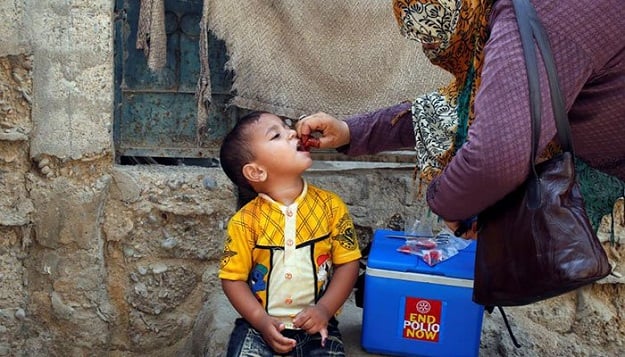MOHAMMAD ZAFAR BALOCH
|
PUBLISHED
July 27, 2025
QUETTA:
Balochistan is witnessing a remarkable turnaround in its battle against poliovirus, with 2025 marking a period of steady progress and renewed hope. Once grappling with some of the country’s highest poliovirus transmission rates, the province now shows a significant decline in environmental surveillance positivity and—most notably—has not reported a single wild poliovirus case so far this year.
In 2024, Balochistan faced an alarming situation: all 23 of its environmental surveillance (ES) sites tested positive for poliovirus, pushing the provincial positivity rate to 72%. The crisis peaked in September when 95% of samples were positive and five cases of wild poliovirus were confirmed. The Quetta Block, a historically high-risk area, recorded an alarming 98% positivity rate—sparking serious concern among public health officials.
However, since late 2024, a steady and promising decline has emerged. By June 2025, only 4 out of 23 environmental samples tested positive, reflecting a sharp drop in positivity to 17%. This downward trend is a result of strengthened surveillance, timely interventions, and consistent community engagement, signaling a major shift in the province’s epidemiological landscape.
When viewed against the national backdrop, Balochistan’s progress stands out. In Sindh, environmental surveillance positivity rose from 70% in 2024 to 84% in 2025, with the Karachi Block still struggling—reporting 94% positivity this year and 83% in June alone. Khyber Pakhtunkhwa (KP) has reported 22 polio cases in 2024 and 8 more in 2025, mostly concentrated in its southern belt. Sindh has confirmed 4 new cases this year after reporting 23 in 2024, while Punjab and Gilgit-Baltistan have reported one case each.
In contrast, Balochistan’s zero-case status in 2025 is a notable public health milestone. Officials attribute this success to an integrated approach combining high-quality immunization campaigns, community trust-building efforts, and the unwavering commitment of health workers, government authorities, and partner organizations.
“This progress reflects the resilience and dedication of everyone involved—from frontline vaccinators to local leaders,” said Inamul Haque, Coordinator of the Emergency Operations Center (EOC) Balochistan.
Religious leaders have played a pivotal role, using Friday sermons and local gatherings to encourage vaccination. Media partners have countered misinformation and amplified credible voices, while development agencies have provided technical and logistical support. The provincial government and district administrations have demonstrated strong ownership, ensuring each campaign is thoroughly planned, resourced, and monitored.
Initiatives like the Immunity Express, journalist engagement at the divisional level, community outreach by social mobilizers, and localized engagement activities have played a key role in increasing vaccine acceptance—especially in historically resistant areas.
“Environmental sample positivity is declining—and that gives us hope,” added Inamul Haque. “But the virus still lurks. The moment we become complacent, it will strike again.”
As Balochistan moves forward, its progress serves as a powerful reminder of what can be achieved through unity, persistence, and public trust.
Mohammad Zafar Baloch is a freelance journalist based in Quetta
All facts and information are the sole responsibility of the writer

